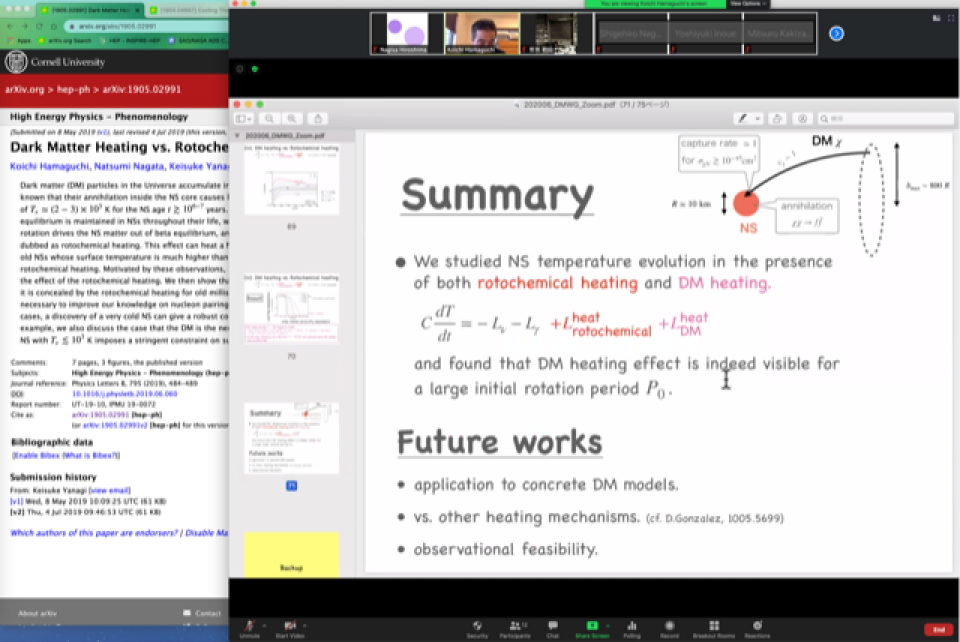Dark Matter Working Group Seminar on June 22, 2020
Astrophysical observations are really important for understanding the nature of dark matter (DM) in multiple aspects. For example, the measurement of the temperature evolution of the neutron star (NS) provides us with new information about the properties of weakly interacting massive particle (WIMP). Since WIMP can interact with nucleon, of which scattering process is intensively searched in direct detection experiments, WIMP in our Universe should be captured by NSs. When the accumulated WIMPs annihilate inside the NS they heat up to modify the temperature evolution of the NS. Such a phenomenon is especially to probe the WIMP in the mass range of m
In order to detect the effect of the WIMP annihilation, one must understand the temperature evolution of the NS in the standard model process accurately. In general, the surface temperature of NS is the highest at their birth, then cools through the photon and neutrino emission. Some of the NS older than ~Myr shows a higher temperature from the simple expectation in the standard model processes and the gap between the observation and the theoretical prediction was believed to be a room for the DM heating.
In the above discussion, the processes of the direct and modified Urca, Bremsstrahlung, and Cooper-pair braking & formation are considered. But another important process so-called the rotochemical heating exists for rotating NSs. The beta equilibrium is not sustained when the NS is rotating and the conversion of the neutron to the proton occurs more frequently than its inverse process. NS heating through this process should be involved when we predict the temperature evolution. The deviation from the beta equilibrium hence the temperature evolution is sensitive to the birth period of the NS.
Based on the calculation involiving a detailed treatment of the NS inner structure, Dr. Hamguchi has shown in this seminar that the rotochemical heating should be more efficient than that from the WIMP annihilation for a typical birth period. There might be no rooms for the WIMP annihilation to heat up the NS. However, the observational estimate of the birth period is still a challenging task, and there could be NSs with high birth periods. Furthermore, the number of such systems that are suitable for testing the WIMP heating scenario will increase in the near future. Such kinds of study should accelerate the collaboration between kinds of experiments to solve the DM mystery.

